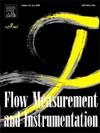Drag reduction mechanisms and cavitation inhibition effect of coupling bionic design on pressure relief valve
IF 2.3
3区 工程技术
Q2 ENGINEERING, MECHANICAL
引用次数: 0
Abstract
Cavitation significantly influences the performance of pressure relief valve, and bionic theory offers a promising solution to this challenge. Inspired by the surface morphology of shark skin and lotus leaf, two novel bionic anti-cavitation valve cores are proposed: a unit and a coupling bionic structure. The cavitation and flow resistance inside different bionic valve core structures are investigated experimentally and numerically. The relationship between cavitation, vortices, and flow resistance is also discussed. The results show that cavitation inside the pressure relief valve is influenced by the inlet pressure, a higher inlet pressure leads to more severe cavitation. Compared with traditional smooth valve core, the unit and coupling bionic valve core structures are helpful to inhibit cavitation development. Specifically, the cavitation development lengths of the unit and coupling bionic valve core structures are reduced by 31.03 % and 34.48 %, respectively. In terms of reducing flow resistance, the bionic valve core enhances fluid flow by weakening the strength of axial vortices and reducing flow resistance. Among them, the coupling bionic valve core shows the best performance, with a cavitation inhibition effect and lower fluid resistance. The maximum drag reduction rate achieved by the coupling structure is 45.92 %.
求助全文
约1分钟内获得全文
求助全文
来源期刊

Flow Measurement and Instrumentation
工程技术-工程:机械
CiteScore
4.30
自引率
13.60%
发文量
123
审稿时长
6 months
期刊介绍:
Flow Measurement and Instrumentation is dedicated to disseminating the latest research results on all aspects of flow measurement, in both closed conduits and open channels. The design of flow measurement systems involves a wide variety of multidisciplinary activities including modelling the flow sensor, the fluid flow and the sensor/fluid interactions through the use of computation techniques; the development of advanced transducer systems and their associated signal processing and the laboratory and field assessment of the overall system under ideal and disturbed conditions.
FMI is the essential forum for critical information exchange, and contributions are particularly encouraged in the following areas of interest:
Modelling: the application of mathematical and computational modelling to the interaction of fluid dynamics with flowmeters, including flowmeter behaviour, improved flowmeter design and installation problems. Application of CAD/CAE techniques to flowmeter modelling are eligible.
Design and development: the detailed design of the flowmeter head and/or signal processing aspects of novel flowmeters. Emphasis is given to papers identifying new sensor configurations, multisensor flow measurement systems, non-intrusive flow metering techniques and the application of microelectronic techniques in smart or intelligent systems.
Calibration techniques: including descriptions of new or existing calibration facilities and techniques, calibration data from different flowmeter types, and calibration intercomparison data from different laboratories.
Installation effect data: dealing with the effects of non-ideal flow conditions on flowmeters. Papers combining a theoretical understanding of flowmeter behaviour with experimental work are particularly welcome.
 求助内容:
求助内容: 应助结果提醒方式:
应助结果提醒方式:


